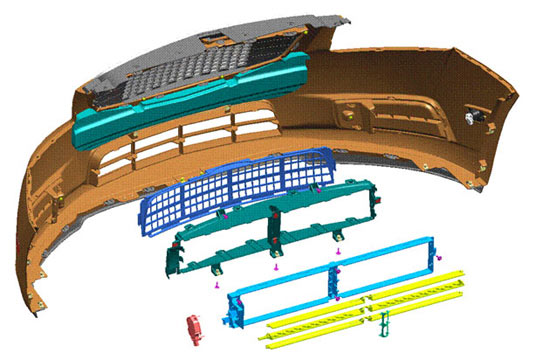




After years of fat, lazy, lumpy so-called “economy” cars that weigh as much as ’57 Chevys, its a relief to see something as simple and straightforward as the Chevy Cruze Eco. The Cruze Eco achieves 50mpg highway fuel economy the old fashioned way, with a standard four-cylinder gasoline engine, aerodynamic tweaks, a manual transmission, and a weight loss program, shedding 200lbs in the process for a total of 3009 lbs.
That’s still quite heavy considering the 50mpg 1992 Honda Civic Vx I drove from Spokane to Portland weighed only 2100 lbs. And its also true that the Cruze Eco’s EPA rating is only 42mpg (Civic’s EPA rating was later revised down to 45mpg), though reviewers have achieved anywhere from 50 to 58 mpg in the Cruze Eco with a gentle right foot.
Car guys like myself would rather drive a 10 or 20 year old Honda than spend cash or interest charges on a brand new car, but for those of you with wives, mothers, and children, consider the dramatic difference in safety. The 1992 Honda Civic was equipped with an airbag but a side impact with a truck could effectively end you. The Cruze Eco has beams in the doors for side impacts, curtain airbags, passenger airbags, rear seat side airbags, ABS, stability control, OnStar crash response, and more that I’m probably forgetting.
Consider all of the comfort, safety, and technology economy cars have gained since 1992 and consider that we’re still able to maintain 50mpg. I call that progress.
There’s no hybrid battery in the Cruze Eco to replace every 8-12 years and while its hardly a looker, it avoids the lumpy potato-shaped appearance of the Toyota Prius. The old Civic hatchback is a favorite for autocrossing and racing (I saw these Civics on TV in Thailand back in 2006), while the Cruze feels more like a standard sedan.
Unlike GM’s past attempts at designing and building small cars, nothing about the Cruze Eco’s interior or exterior say “meth addict.” Its a bit cheap inside, sure, but its decorated well. You won’t sit inside and confuse it for, say, a Cadillac Escalade, but being in a Cruze doesn’t make you feel like you’ve reached a low point in life like a Dodge Caliber would.
The new fuel-efficient gasoline cars, critics say, raise doubts about government efforts that favor any one technology over another. If subsidies are to be made, they argue, they should go to efficient cars, no matter what their power source. Moreover, when the fuel economy of a best-selling gas car is improved even incrementally, it can have much larger effects on the nation’s oil consumption than an alternative-technology model that doesn’t sell well.
“When you take some of the most popular vehicles in the U.S. – say, the Ford F-150 pickup – and improve them by just a few mpg, the effects can add up very quickly,” said John DeCicco, a faculty fellow at the Michigan Memorial Phoenix Energy Institute at the University of Michigan. “Much more so than with a niche car.”
The costs to manufacture, own, and subsidize alternative energy make gas-powered economy cars, at least for now, a more economical choice.
Although the Cruze is a very standard car with no solar panels, batteries, or other expensive gimmicks, it does have one trick up its sleeve:
 This electronically-controlled front clip reduces the coefficient of drag by 0.016 for a total of 0.298cd, a 10% improvement over the standard Cruze. Other fuel-saving enhancements include:
This electronically-controlled front clip reduces the coefficient of drag by 0.016 for a total of 0.298cd, a 10% improvement over the standard Cruze. Other fuel-saving enhancements include:
With all the used bargains out there, its hard for me to suggest a brand new car to anyone, but if I was a college grad with my first real job and was dead set on buying brand new, a $18,995 Cruze Eco might be a viable option. I’d at least give at a look along with the Focus and Elantra. The Focus offers higher build quality while Elantra has sharper styling. The efficiency-tweaked Focus SFE (Super Fuel Economy) promises 40mpg, which may translate into 45mpg or more with careful driving.
Below is Edmunds’ comparison of the standard Focus and Cruze:
Fast Tube by Casper
I hate these new EPA ratings. They all seem to be set up for people with a lead foot. It really kills turbo cars ratings especially because I think they spend half the new EPA cycle in the boost.
Anyone who drives a turbo car regularly knows if you want to save gas you keep that boost gauge at 0psi or less if you don’t want it to suck gas.